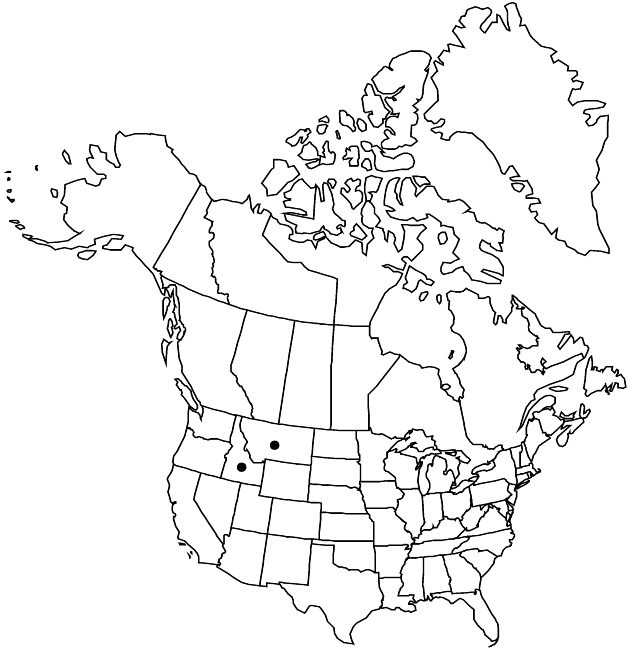Ericameria parryi var. montana
Phytologia 75: 89. 1993.
Common names: Mountain rabbitbrush
EndemicConservation concern
Basionym: Chrysothamnus parryi subsp. montanus L. C. Anderson Phytologia 38: 319, fig. 5. 1978
Plants 10–20 cm (intricately branched). Leaves moderately crowded, green; blades 1-nerved, linear, 20–35 × 1–2 mm, faces glabrous, viscidulous; distal overtopping arrays. Heads 2–5 in ± cymiform arrays or borne singly. Involucres 10–11.5 mm. Phyllaries (11–)13–18, ± chartaceous, outer apices long-acuminate, herbaceous, inner acuminate (viscidulous). Florets (4–)5–12; corollas yellow, 9–10 mm, tubes finely glandular-puberulent, throats gradually dilated, lobes 1.4–1.7 mm. 2n = 18.
Phenology: Flowering late summer–fall.
Habitat: Rocky slopes near timberline
Elevation: ca. 2900 m
Discussion
Of conservation concern.
Variety montana is known only from Red Conglomerate Peaks at the Idaho/Montana border.
Selected References
None.
Lower Taxa
None.
